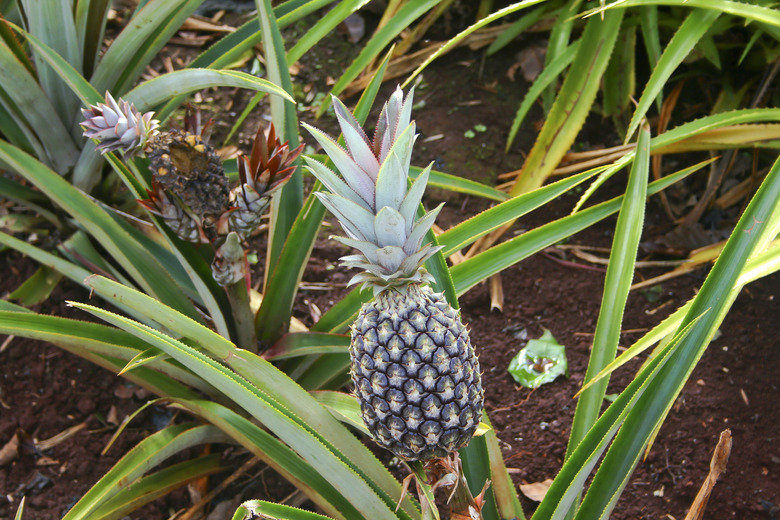How To Divide A Pineapple Bromeliad Plant
Pineapples (Ananas spp.) belong to the diverse Bromeliaceae family of plants, all of which are native to tropical and subtropical regions of the Americas. In addition to their edible fruit, pineapple bromeliad plants are also ornamental. One of the most effective bromeliad propagation methods involves planting offshoots from the parent plant.
Types of Pineapple Bromeliads
There are approximately five species in the Anansas genus of bromeliads. The best known of these species is the edible pineapple fruit (Ananas comosus, zones 11 to 12). Each plant produces a single fruit.
Other species, such as the red pineapple (Ananas comosus var. bracteatus f. tricolor), zones 11 to 12) also produce fruit, but are grown primarily as ornamental pineapple plants.
All pineapple species are native to South America. While many bromeliads are epiphytic, meaning they grow attached to a tree, pineapples are terrestrial and grow on soil in the ground. These plants have spiny leaves with lengths between 3 and 5 feet.
All of these tropical plants form rosettes that eventually flower and produce fruit. Pineapple plants die after producing fruit; however, they produce shoots known as pups.
Tip
The larger the pups are when you replant them, the faster the new plants will reach maturity and, in the case of Ananas comosus, bear edible fruit.
Dividing Pineapple Pups
Pineapple plants can be propagated in several ways to create new plants, one of which involves cutting off and replanting the pups, which are sometimes referred to as suckers, slips or hapas.
Once the pups are about half the size of the mother plant, you can remove them to be replanted. This may involve leaving the pups attached to the parent plant for several weeks after harvesting fruit to allow them to reach the desired size.
Your patience will be rewarded: The larger the pups are when you replant them, the faster the new plants will reach maturity and, in the case of Ananas comosus, bear edible fruit.
Planting Pineapple Pups
Let's take a look at the process of planting these pineapple pups.
Outdoor Plants
After removing the bromeliad pups from the parent plant, allow a day or two for them to dry before planting them. When choosing a location for your pineapple plants, be sure to choose a site that receives full sun. Allow 1 to 3 feet of space in between plants.
Pineapple can also be planted in large containers using a potting mix meant for bromeliads. It is important that the containers be large enough—3 to 7 gallons is ideal—to accommodate the plant's root system. A container that is too small may interfere with the development of the roots and the plant.
Pineapple bromeliad plants grow best in well-draining, slightly acidic soil that is rich in organic matter. While you want to make sure to keep the soil moist, pineapples can tolerate some drought.
Tip
Avoid overwatering pineapples, which can lead to root rot.
Indoor Plants
Container pineapple plants can also be kept indoors as ornamentals, though the edible pineapple plants will take longer to produce fruit and the fruit is not considered flavorful. Pineapple bromeliad plants can be difficult to cultivate as houseplants, however, as they require an environment that offers high humidity, direct sun and temperatures above 65°F.
References
- Colorado State University Extension: Bromeliads
- Clemson Cooperative Extension: Bromeliads
- Missouri Botanical Garden: Ananas comosus
- University of Florida IFAS Extension Gardening Solutions: Pineapple
- University of Florida IFAS Extension: Pineapple Growing in the Florida Home Landscape
- Missouri Botanical Garden: Bromeliad Care and Culture
